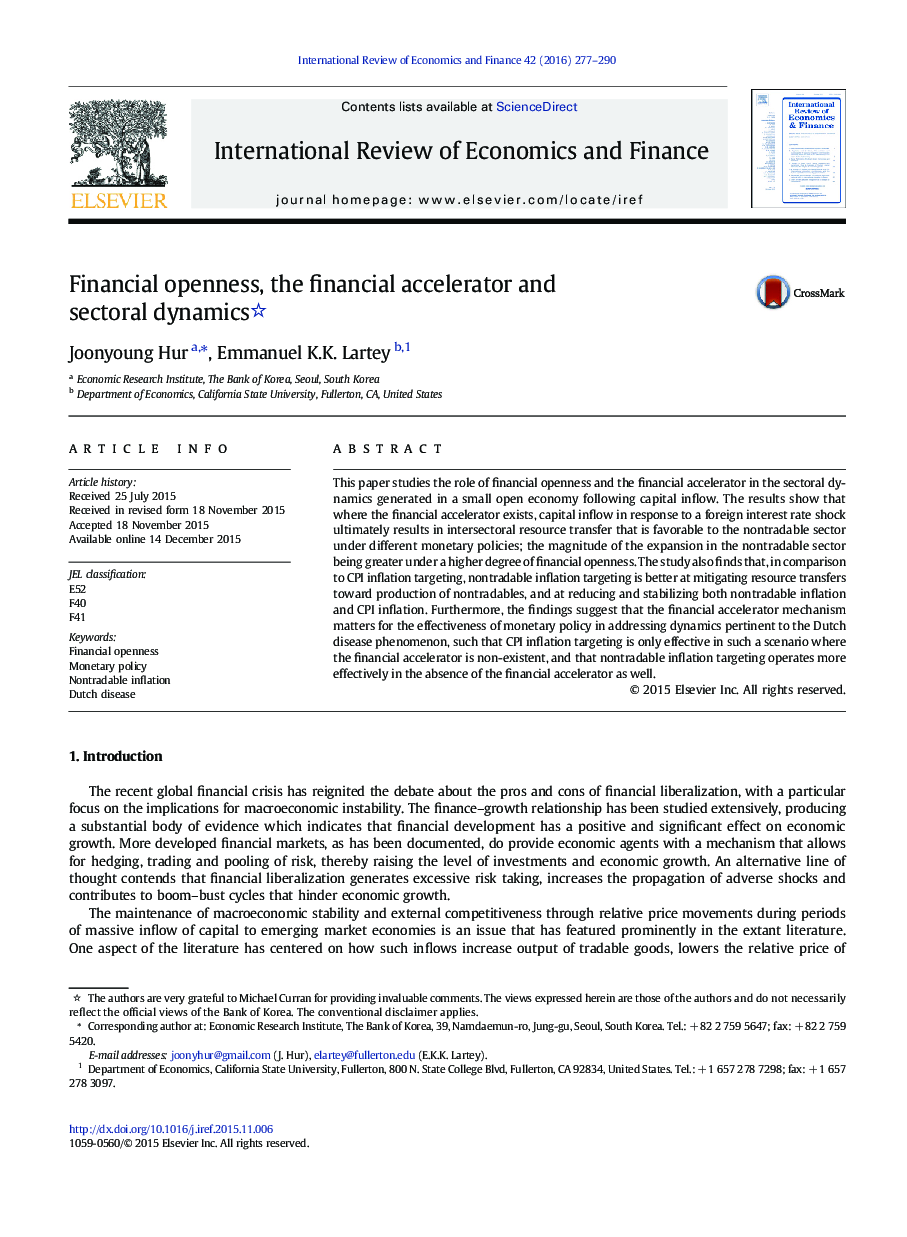| Article ID | Journal | Published Year | Pages | File Type |
|---|---|---|---|---|
| 5083149 | International Review of Economics & Finance | 2016 | 14 Pages |
â¢We study the role of the financial accelerator for Dutch disease dynamics.â¢We examine whether the degree of financial openness matters for such dynamics.â¢The financial accelerator causes greater resource transfer to the nontradable sector.â¢CPI inflation targeting mitigates Dutch disease effects where the financial accelerator is absent.â¢Nontradable inflation targeting is more effective at addressing Dutch disease effects.
This paper studies the role of financial openness and the financial accelerator in the sectoral dynamics generated in a small open economy following capital inflow. The results show that where the financial accelerator exists, capital inflow in response to a foreign interest rate shock ultimately results in intersectoral resource transfer that is favorable to the nontradable sector under different monetary policies; the magnitude of the expansion in the nontradable sector being greater under a higher degree of financial openness. The study also finds that, in comparison to CPI inflation targeting, nontradable inflation targeting is better at mitigating resource transfers toward production of nontradables, and at reducing and stabilizing both nontradable inflation and CPI inflation. Furthermore, the findings suggest that the financial accelerator mechanism matters for the effectiveness of monetary policy in addressing dynamics pertinent to the Dutch disease phenomenon, such that CPI inflation targeting is only effective in such a scenario where the financial accelerator is non-existent, and that nontradable inflation targeting operates more effectively in the absence of the financial accelerator as well.
